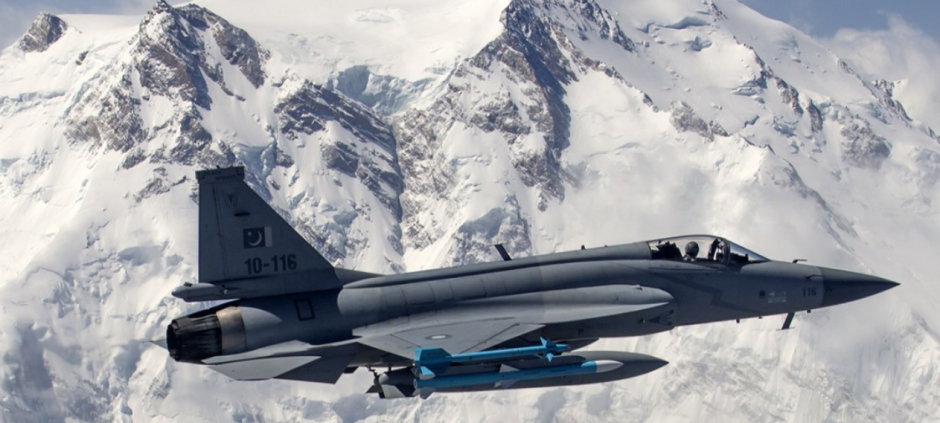The Pakistan Air Force (PAF) is quietly but decisively emerging as one of Asia’s leading air forces. This is not a partisan assertion, nor speculative bravado—it is a data-backed assessment rooted in the PAF’s advancements across nine key pillars of modern air power. These pillars collectively highlight a force that is technologically sophisticated, strategically autonomous, operationally integrated, and combat-proven.
1. Modernising at Speed
At the core of the PAF’s strength lies a robust and fast-modernising fighter fleet of approximately 450 aircraft. This includes over 150 JF-17s, 75 F-16s, 150 Mirage variants, and the newly inducted J-10C multirole fighters. Aggressive modernisation efforts are underway—particularly the rollout of the JF-17 Block III and continued J-10C deliveries. Even legacy aircraft, such as the Mirage, have been upgraded with data links and long- range standoff weapons, keeping them combat-relevant.
By 2026, the PAF is expected to induct its first fifth-generation fighter. By 2030, it may operate three distinct fifth-generation platforms: the Chinese J-35, the Turkish KAAN (rebranded as “Iqbal” in Pakistani service), and Pakistan’s indigenous stealth fighter under development (PFX). These fighters promise stealth, network integration, doctrinal flexibility, and strategic deterrence.
Despite a smaller overall fleet compared to India, Pakistan is outpacing many regional powers—including Japan and South Korea—in the adoption and integration of advanced technologies.
2. Enabling Dominance
The PAF maintains one of the region’s largest fleets of AEW&C aircraft, exceeding those of Israel, Singapore, and even India. These include the Saab 2000 Erieye and ZDK-03
Karakoram Eagles, with additional KJ-500s anticipated. These assets support electronic warfare (EW), real-time targeting, and beyond-visual-range combat. The PAF has demonstrated effective EW capabilities in real-world conflicts—most notably
during the 2019 air engagement over Kashmir, where Indian communications were severely disrupted. Ground-based jamming, airborne EW platforms, and AI-enhanced signal deception are all part of Pakistan’s maturing EW doctrine.
Also Read: Pakistan Air Force Set to Launch Advanced Radar Programs
3. Indigenous and Integrated Networking Warfare
A standout feature of the PAF is its homegrown Link-17 data link—a secure, indigenous system that integrates American, French, Swedish, Chinese, and Turkish platforms into one cohesive battle space. Unlike regional peers who rely on foreign-provided datalink
systems, Pakistan’s network is sovereign and service-wide.This architecture enables sensor fusion, shared situational awareness, and dynamic targeting—even in GPS-denied or EW- contested environments—providing a critical edge in modern combat.
4. Autonomous Systems
Pakistan’s UAV fleet, encompassing over 300 medium and high-altitude drones, rivals or exceeds those of many regional powers. Operated by both the PAF and sister services, these include the CH-4, Shah-par-II/III, Buraq, Wing Loong, Bayraktar TB2, Akıncı, Anka is a confirmed future induction and domestically developed Mach1
More advanced systems like the stealthy Kizilelma and a locally developed supersonic UCAV, are in the pipeline.
Critically, these systems are not merely imported; Pakistan manufactures a wide range of drone airframes and payloads—ranging from MALE/HALE platforms to tactical quadcopter and loitering munitions—demonstrating a doctrinal commitment to drone warfare rather than experimental adoption.
5. Expanding Frontiers of Space & Cyber
Though still developing in comparison to China or India, Pakistan’s space program is advancing rapidly through its partnership with China. A joint lunar mission, access to Beidou navigation, and shared use of China’s space-based sensing and early warning infrastructure provide Pakistan with strategic space capabilities.
In the cyber domain, the PAF operates a dedicated cyber command. With the support of the National Aerospace Science and Technology Park (NASTP), Pakistan is developing AI- driven threat detection, secure communications, and quantum-resilient encryption protocols.
6. Infrastructure and Survivability
Pakistan’s geographical size and strategic foresight have led to the establishment of numerous operational airbases across the country. Many are hardened, equipped with underground storage, decoy infrastructure, and rapid runway repair units.
Moreover, Pakistan’s motorway system has been incorporated into national defence planning. The PAF has conducted highway takeoff and landing exercises for over two decades, unlike India, which has only recently begun exploring similar capabilities. This operational flexibility enhances survivability and resilience in the event of conflict.
7. Domestic Industry and Strategic Partnerships
The PAF benefits from a well-developed domestic defence industrial base. The production
of the JF-17, Mushshak trainers, UAVs, radars, targeting pods, and a wide array of
munitions reflects a self-reliant supply chain, supported by strong partnerships with China
and Turkey. Pakistan’s defence industry also exports systems to countries in Africa, the Middle East,
and Asia. During recent escalations, allies like Turkey and China provided rapid material support—reinforcing the reliability of Pakistan’s partner network, which is geographically and politically diversified.
8. Variety and Volume of Weapons and Munitions
The PAF fields one of Asia’s most diverse and capable arsenals of air-delivered munitions. From the PL-15 and PL-10 air-to-air missiles to U.S. AMRAAMs, H-4 glide bombs, and the
CM-400AKG, the weapons suite is designed for flexibility and precision.
Cruise missiles, anti-radiation missiles, and nuclear-capable delivery systems—both strategic and tactical—are fully integrated into PAF operations. Pakistan’s munitions production capacity is well-established and ongoing, ensuring operational readiness and sustainability.
9. Personnel, Training and Experience
Perhaps most impressive is the PAF’s human capital. It boasts one of the best air-to-air
combat records in South Asia, including victories in wars with India and in Cold War-era skirmishes with the Soviet Union. PAF pilots flying for Arab states also achieved confirmed
kills against Israeli aircraft.
Pakistan designs and manufactures its own trainer aircraft and exports both platforms and pilots globally. Its pilot training pipeline is robust, well-resourced, and highly regarded— contributing to a surplus rather than a shortage of skilled aviators. Pakistani instructors routinely assist air forces in Africa, the Middle East, and Central Asia.
10. Pakistan’s J-35A Fighter Jet Deal: A Strategic Edge Over India
Pakistan’s decision to acquire up to 40 Chinese-made J-35A fifth-generation fighter jets marks a major leap in its air force capabilities, potentially shifting the regional balance of power in South Asia. With deliveries expected to begin as early as next year, the Pakistan Air Force (PAF) could gain a significant edge over the Indian Air Force (IAF) for the next 12 to 14 years.
India is not projected to induct any fifth-generation fighters within that timeframe, placing Pakistan in a strategically advantageous position. The J-35A’s stealth technology, advanced sensors, and deep-strike capabilities will give the PAF greater tactical flexibility and the ability to operate in contested airspace with reduced detection.
Pakistani pilots are already undergoing training to operate the aircraft, reflecting Islamabad’s commitment to rapid integration of the platform.
Conclusion
PAF has emerged as a rising air power measured across these dimensions, the Pakistan Air Force has positioned itself as a formidable force in Asia. It has narrowed or surpassed capability gaps with peers like Japan, South Korea, and Saudi Arabia—not through sheer numbers alone, but through integration, innovation, and institutional resilience.
By 2030, Pakistan will likely be recognised not just as a capable regional player, but as Asia’s third great air power—behind only China —driven by strategic foresight, operational excellence, and self-reliance in the face of evolving threats.












